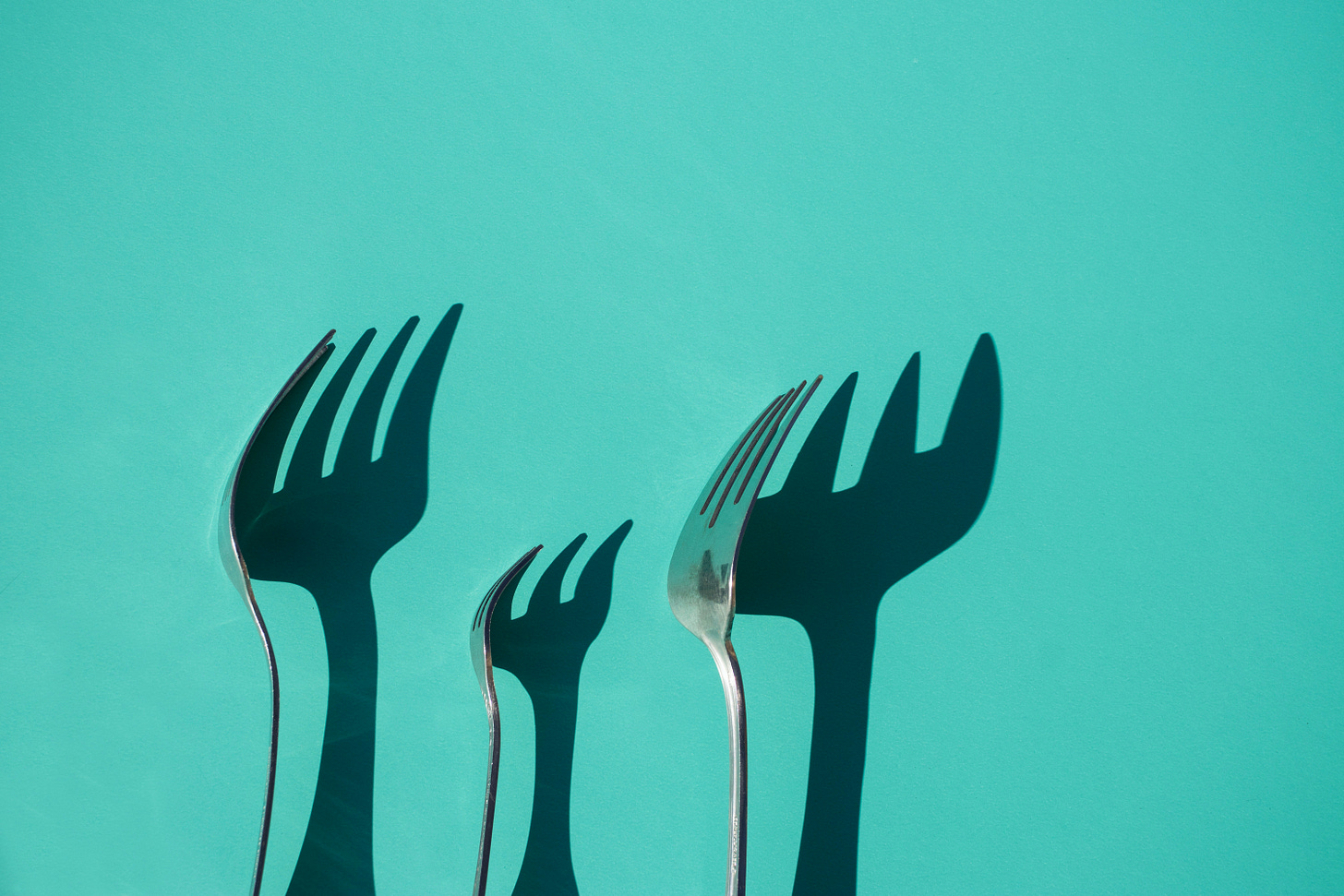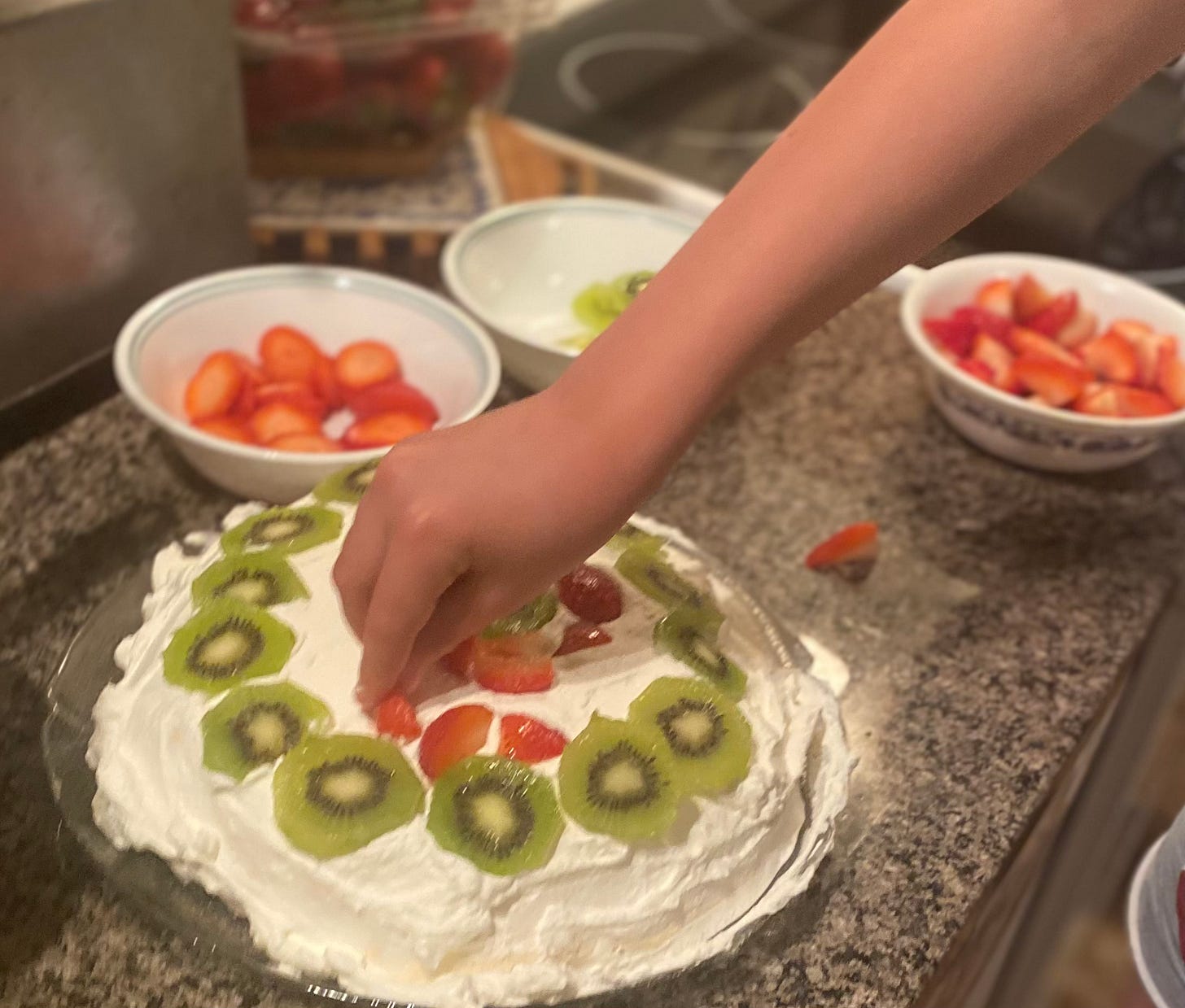This is the third and final part of a series on the notions of home. Because I write about heritage languages, I will without a doubt write about notions of home again in the lifespan of this newsletter. But this little series was inspired by the time I spent in the Canadian city where I grew up this fall, the longest time I have been “home” for many years. Part 1 is here and part 2 is here.
“If food is central to human life, so is language, and the two intersect at several crucial junctures: We come together to eat and talk; those occasions when silence accompanies food are the remarkable exceptions.”
— Alastair Pennycook and Emi Otsuji in Metrolingualism: Language in the City
Some of my favourite sections in Mother Tongue Tied are about food. I note the way mothers are tasked with “reproducing” and “performing” home when “home” is something far away. A large part of that is sourcing and preparing meals that evoke a sense of home, whatever and wherever that may be. This falls under the work of reproducing cultures and structures of belonging. Immigrant mothers or those trying to pass on a culture and a heritage language are tasked with (re)making a home that will hopefully nurture a love for a language and culture that is different from the community one(s). I have written about a version of this idea here before, in the context of memory making and keeping, and how that applies to motherhood in general. But for multilingual and multicultural families, there is an added element of making the linguistic and cultural memories, passing on a language and culture that is often at odds with another language and often, culture.
In the book, I reference the work of Irene Gedalof who argues that the idea of “juggling between two worlds” is insufficient because, there is an “entanglement of repetitions and change involved in the work of mothering” and immigrant mothers or those who like me are trying to recreate a culture and language, may be torn between their own sense of belonging and connectedness.
In a passage about food, Gedalof remarks how it might be making “food from home” in the new home with slightly different ingredients, food grown in different climates, or just any variation that changes the taste and presentation from a place “over there” to a place “over here”. Even specific serving dishes can change the way we experience a meal if we have certain expectations of its recreation. My connection to Polish food is predominantly about the nostalgia of my childhood visits to Poland, and the Polish food my parents made in our family home in Canada.
As a child visiting Poland with my parents, our days were scheduled around food: where we would be eating dinner every day, which grandmother would be feeding us, what did we want to eat while we were there. I spent a lot of time sitting in my paternal grandmother’s tiny kitchen, talking over pickle soup. At my maternal grandmother’s we ate pierogi with cheese served with śmietanka (the diminutive form of śmietana, sour cream, because grandmothers use the diminutives with their grandchildren, even when those grandchildren are in their twenties and thirties).
This fall, when we visited Saskatoon, the city where I grew up, we stayed with my mom in my childhood home. Long before I had children, when I would visit my parents, there were expectations, mine and theirs, around the food we would be eating and even the restaurants we would go to while I was there. What were the (Polish) meals I wanted to eat while I was there, my father would always ask. When my children were younger and my mom would visit us in London, I had this idea of her making pierogi (perogies) with my children, teaching them how to cut out the shapes, fill the little pockets and make everything from scratch. I wanted her to (re)create a sense of Polishness through a dish I associated with my other home as if perogies would somehow immediately entice my children to embrace their Polish heritage too. But as my mom rightly reminded me back then, perogies take a lot of effort to make and cooking in someone else’s kitchen, especially in a tiny London flat kitchen, with young children (!) is more challenging than we imagine. It was never really about the perogies anyway.
This time, visiting my mom in her own kitchen, it was easier for my children to cook with her, or rather bake as that is what my daughter really wanted to do. And so the two of them made Polish ptysie (cream puffs) and Pavlova (I know, not Polish but still a dessert I think of when I think of “home”). There were pierogi, made by my mom before our arrival, and for breakfast, I found myself making open-faced sandwiches often (a.k.a. “tartines” in French as that sounds way more sophisticated, or in Polish, kanapki) usually with cheese and cucumber or tomato, something I rarely make at home but something I associate with my childhood Polishness, both in Poland but also, in Canada.

The topic of food is vast and complex and it is not lost on me writing about baked goods is an immense privilege in a world where people are being starved. It is unfathomable food can be used as a means of control and as a weapon. In my family, my mom and I often mention my great-grandmother, my mother’s paternal grandmother. She was widowed in Poland very early and had to raise five children, including my grandfather, on her own in a time when women had very little opportunities all during political uncertainty and war. All five of her children ended up working in food-related jobs as adults, something my mom says was my great grandmother’s doing so that they would always hopefully have access to food. I was also repeatedly told my great grandmother carried a piece of bread in her purse at all times, just in case.
While I was writing this essay and thinking about (re)creating culture and language through food, I came across this beautiful series on
about the food of Lebanon and Palestine. I was moved by this essay especially: When Food Doesn’t Taste Like Home by Doha Kahlout, translated by Katharine Halls.There are people for whom the word ‘food’ now means nothing more than the clench in their heart when they take a few bites of whatever preserved food they can get hold of beside the tent which is their home.
There is also an essay about Lebanese wine and I urge you to read both.
To my American friends, I am also thinking about dinner-table conversations you may be having next week during Thanksgiving, especially after the election. I wish I had some brilliant advice or some magic to throw your way but I don’t. I do know it is hard because I have been there before, defending the causes close to my heart around a table with loved ones who do not share my views. Take care of yourselves and use the time you come together to eat and talk for some good, whatever that looks like for you.
I would love to hear your food-related memories, good or bad, or how you (re)create culture and language through food if you want to share in the comments!
To conclude this mini series on “notions of home”, I wanted to share something I heard at a linguistics conference I attended a few months ago. During a presentation about the identity and belonging of Slovak women in the UK and about what they embrace and/or give up in the context of language and culture when they become mothers, one mother in the study noted how notions of home had changed since she had children. Home was neither there, nor here anymore, home was now where her children were.
Thank you for reading.







I'm from the southern US, living in Germany again since last fall. I brought my vintage cast iron skillets and my great-grandmother's cast iron chicken fryer (like a skillet, but deeper -- an all-purpose all-star in my kitchen since my grandmother died over 20 years ago).
I wanted to make a pot of beans and a skillet of cornbread, one of the most basic meals imaginable back home. Total home food.
"Beans" means pinto beans -- nonexistent in Germany, until I finally found a bag in an Asian market.
For the cornbread, I could find polenta (too coarse) or corn flour (too fine) -- until I finally found a bag of corn meal with the right size grind in the Turkish section of the supermarket.
I winced, and laughed, at my basic tastes, which were now somehow multiculti exotic! Oh, and it turns out that shredded Gouda makes a great substitute for the Monterey Jack we usually put on the beans.